Canada, the world’s second-largest country, offers an extraordinary tapestry of vibrant cities that seamlessly blend natural beauty, rich cultural heritage, and modern urban sophistication. For travelers from the United States, exploring Canadian cities provides an accessible yet distinctly different experience, with the added benefit of easy border crossings and familiar conveniences. From the French-influenced streets of Quebec City to the cosmopolitan energy of Toronto, these destinations showcase the diverse character that makes Canada one of the world’s most beloved travel destinations.
Whether you’re seeking European charm without crossing the Atlantic, world-class outdoor adventures, or multicultural culinary experiences, Canadian cities deliver unforgettable experiences just a short drive or flight from major US metropolitan areas. The combination of universal healthcare, progressive politics, and the famously friendly Canadian hospitality creates an environment where visitors feel welcomed and safe while exploring new cultures and landscapes.
Table of Contents
Quebec City, Quebec: Europe in North America
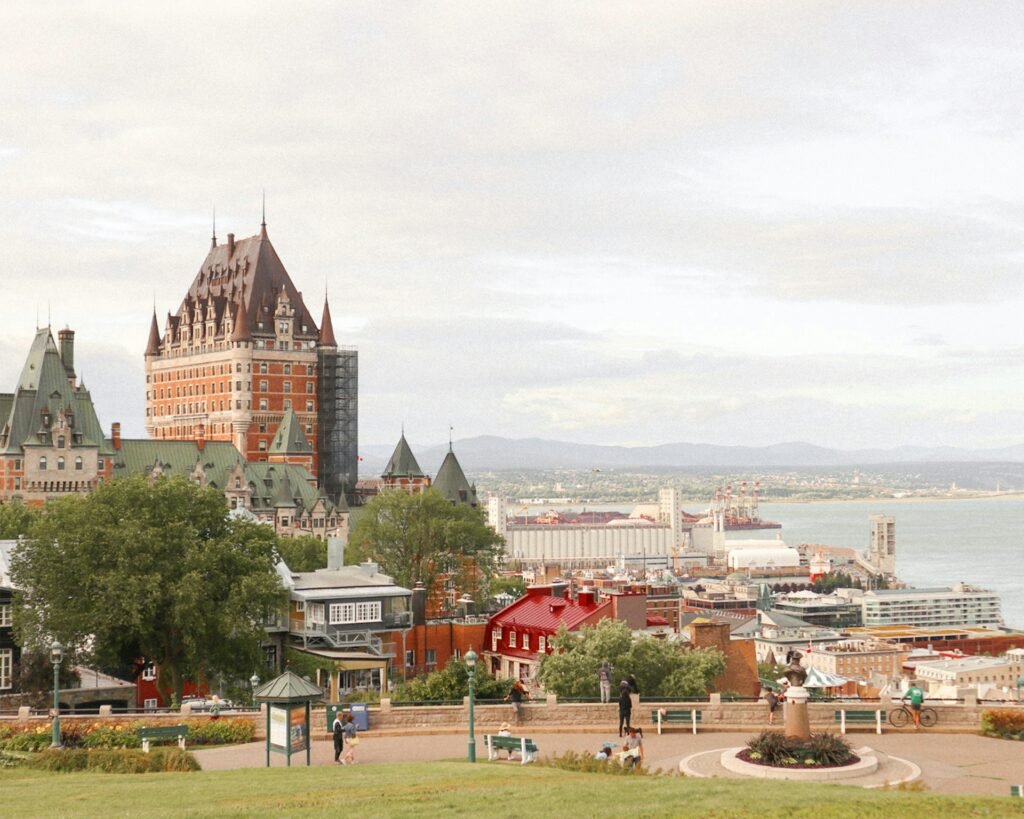
Quebec City stands as North America’s only fortified city, ranking as Canada’s top destination according to Travel + Leisure’s 2025 reader survey. This UNESCO World Heritage site offers visitors an authentic European experience without crossing the Atlantic Ocean.
The heart of Quebec City lies within its ancient stone walls, where cobblestone streets wind past centuries-old buildings and the magnificent Château Frontenac overlooks the St. Lawrence River. The historic atmosphere of Vieux-Quebec creates an enchanting backdrop for exploration, with French architecture, winding streets, and exceptional shopping and dining experiences.
Key attractions include:
- Old Quebec (Vieux-Québec): Explore 17th-century buildings and historic landmarks
- Château Frontenac: The iconic castle-like hotel dominating the skyline
- Plains of Abraham: Historic battlefield from 1759
- Montmorency Falls: An 83-meter waterfall just outside the city
Quebec City transforms dramatically with the seasons. The Quebec Winter Carnival showcases how locals embrace winter, creating ice sculptures and celebrating the season. Many visitors recommend experiencing the city in winter when the Saint Lawrence River freezes over, creating a magical atmosphere.
The city’s distinctive French Canadian culture provides visitors with authentic French cuisine, from traditional bistros to modern gastronomic experiences. The multilingual environment and European flair make Quebec City feel like “traveling far away” while remaining easily accessible from major US cities.
Montreal, Quebec: Cultural Capital of Canada
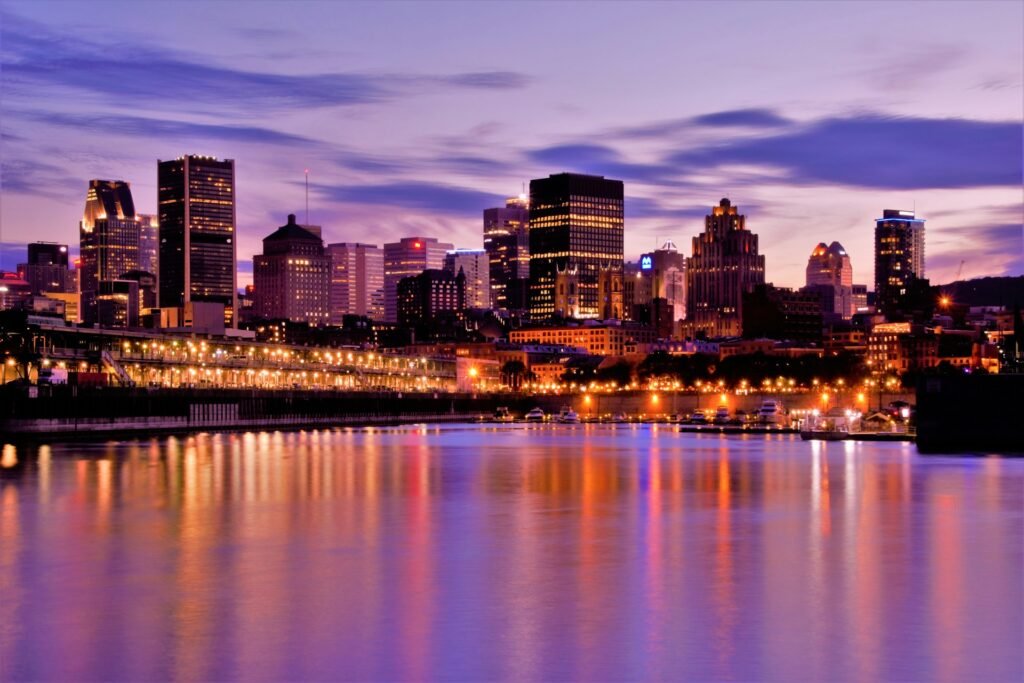
Montreal consistently ranks among Canada’s top destinations, earning second place in Travel + Leisure’s 2025 rankings with its unique blend of European charm and North American energy. This cosmopolitan city serves as Canada’s cultural hub, offering world-class festivals, exceptional dining, and vibrant neighborhoods that reflect its diverse population.
The city’s bilingual character creates a distinctive atmosphere where French and English cultures interweave seamlessly. Old Montreal (Vieux-Montréal) features cobblestone streets and 17th-century architecture, while modern neighborhoods like the Plateau offer trendy shops, galleries, and restaurants.
Cultural highlights include:
- Montreal Museum of Fine Arts: One of Canada’s premier art institutions
- Mount Royal: Offering panoramic city views and beautiful parkland
- Notre-Dame Basilica: Stunning Gothic Revival architecture
- Festival de Jazz de Montréal: The world’s largest jazz festival
Montreal’s exceptional food scene combines French culinary traditions with international influences. The city is famous for its Montreal-style bagels, distinct from New York versions, and serves as the source of 90% of Canada’s maple syrup. The Jean-Talon Market in Little Italy showcases local produce, artisanal foods, and specialty items like Quebec ice cider.
The city’s accessibility makes it particularly attractive to US visitors, with excellent public transportation and a metro system featuring 16 wheelchair-accessible stations. Montreal’s progressive approach to inclusivity and its vibrant LGBTQ+ scene contribute to its reputation as one of Canada’s most welcoming destinations.
Vancouver, British Columbia: Natural Beauty Meets Urban Sophistication

Vancouver ranks third in Travel + Leisure’s 2025 survey, celebrated for its stunning natural setting between the Pacific Ocean and Coast Mountains. This West Coast metropolis offers the perfect blend of urban amenities and outdoor adventures, making it a year-round destination for diverse interests.
The city’s commitment to sustainability and environmental consciousness creates a unique urban environment. Stanley Park, one of North America’s largest urban parks, provides hiking trails, beaches, and spectacular views of the city skyline and surrounding mountains. The park’s Seawall offers one of the world’s longest uninterrupted waterfront paths for walking, cycling, and inline skating.
Must-visit neighborhoods include:
- Gastown: Historic district with Victorian architecture and the famous steam clock
- Granville Island: Public market, artisan shops, and cultural venues
- Chinatown: One of North America’s largest, featuring authentic cuisine and cultural attractions
Vancouver’s proximity to outdoor adventures sets it apart from other major cities. Whistler, just two hours away, offers world-class skiing and mountain biking. The Capilano Suspension Bridge provides an exhilarating 137-meter walk above a forest canyon.
The city’s multicultural food scene reflects its diverse population, with exceptional Asian cuisine, fresh Pacific seafood, and innovative farm-to-table restaurants. Vancouver’s microbrewery scene and coffee culture add to its reputation as a lifestyle destination.
Climate advantages make Vancouver particularly appealing, with the Pacific West Coast offering Canada’s mildest weather. Average minimum temperatures rarely fall below 0°C, making it comfortable for year-round exploration.
Toronto, Ontario: Canada’s Cosmopolitan Hub
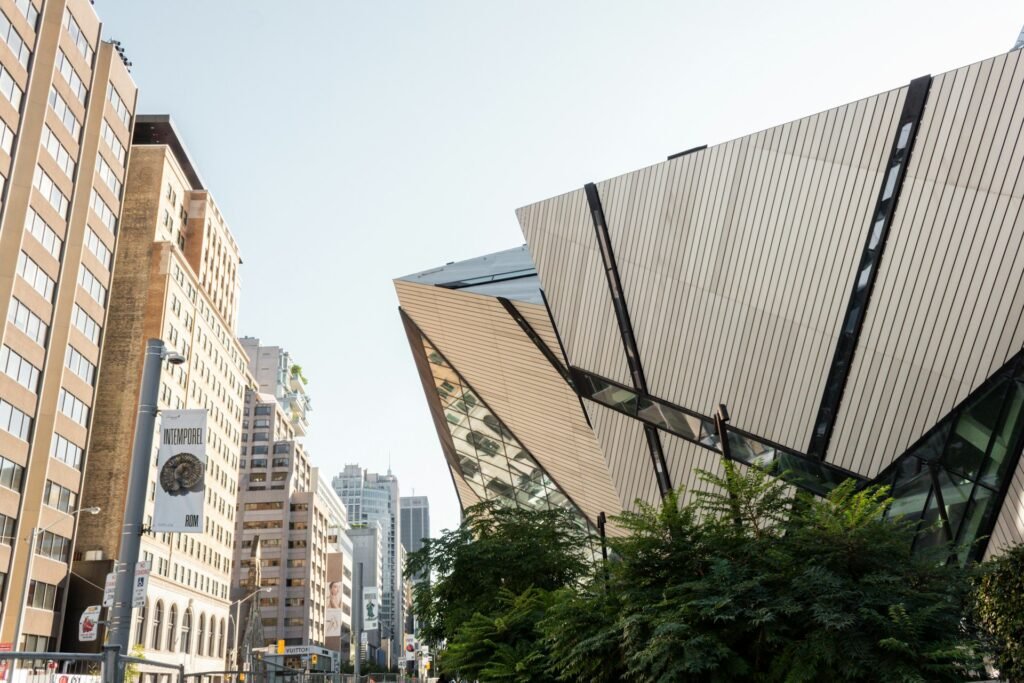
As Canada’s largest city, Toronto serves as the country’s economic and cultural powerhouse, offering visitors an incredibly diverse urban experience. With nearly 50% of its population born outside Canada, Toronto creates a multicultural environment where over 140 languages are spoken.
The CN Tower dominates Toronto’s iconic skyline, offering spectacular city views from its observation deck and revolving restaurant. The tower serves as a symbol of the city’s modern ambitions while providing visitors with unparalleled perspectives of Lake Ontario and the urban landscape.
Cultural attractions include:
- Royal Ontario Museum: One of North America’s largest museums with 13 million artifacts
- Art Gallery of Ontario: Extensive collection of Canadian and international art
- Distillery District: Historic area with galleries, shops, and restaurants
- Kensington Market: Eclectic neighborhood with diverse shops and cuisines
Toronto’s food scene reflects its cultural diversity, with authentic cuisine from virtually every corner of the globe. The St. Lawrence Market provides access to local producers and international specialty foods, while neighborhoods like Little Italy, Chinatown, and Greektown offer authentic cultural experiences.
The city’s accessibility from US cities makes it particularly attractive to American visitors. Major highways and frequent flight connections provide easy access from northeastern US cities. Toronto’s public transportation system efficiently connects attractions and neighborhoods throughout the metropolitan area.
Toronto’s festival calendar includes major events like the Toronto International Film Festival, which brings global attention to the city’s cultural scene. The Toronto Islands offer respite from urban intensity with beaches, parks, and recreational activities just minutes from downtown.
Ottawa, Ontario: Capital City Charm
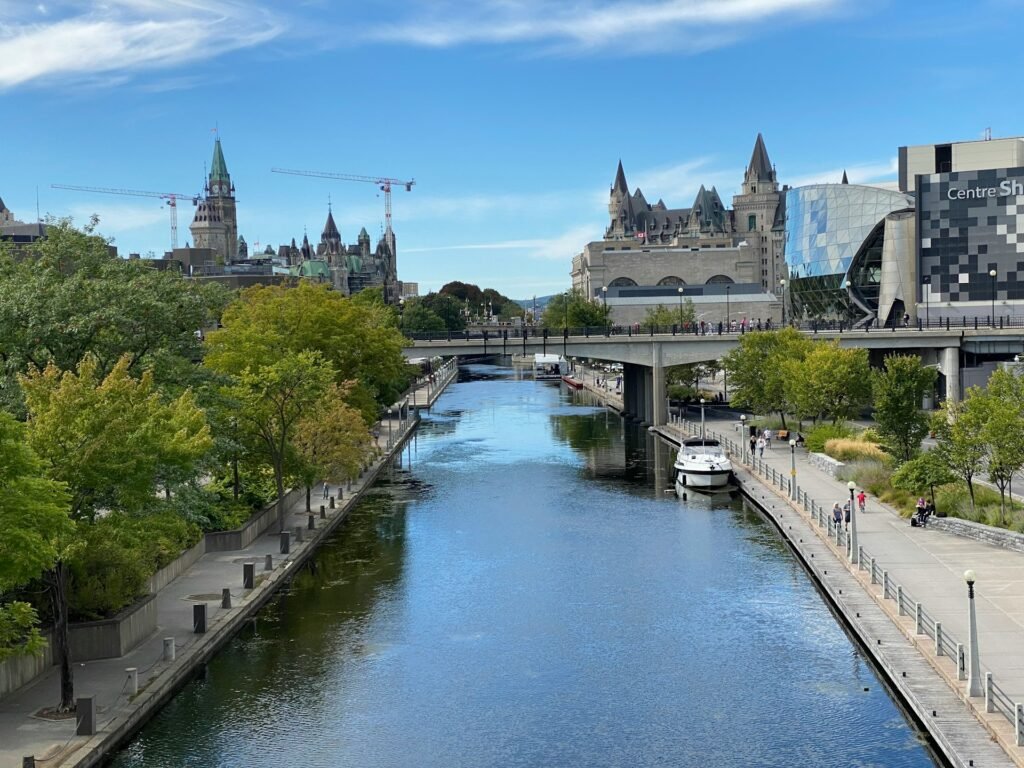
Canada’s capital city offers visitors an intimate look at the country’s political heart while providing excellent museums, beautiful parks, and historic attractions. Ottawa’s Gothic Revival architecture, particularly the Parliament Buildings, creates a distinctive skyline that resembles fantasy castles.
Parliament Hill serves as Ottawa’s centerpiece, where visitors can tour government buildings and witness the Changing of the Guard ceremony. The buildings’ architecture and setting create one of Canada’s most recognizable and photographed locations.
Major attractions include:
- Rideau Canal: UNESCO World Heritage site, the world’s longest skating rink in winter
- National Gallery of Canada: Extensive collection of Canadian and Indigenous art
- Canadian Museum of History: The country’s most visited museum
- Canadian War Museum: Comprehensive military history collections
The Rideau Canal transforms with seasons, offering boating and scenic walks in summer, then becoming the world’s largest skating surface during winter months. This transformation exemplifies Ottawa’s ability to embrace seasonal changes and create unique experiences year-round.
Ottawa’s museum concentration makes it exceptional for cultural tourism. The city houses multiple national museums, each offering world-class collections and exhibitions. The Canadian Museum of History, located across the river in Gatineau, attracts over 1.2 million visitors annually.
The city’s manageable size and walkable downtown core make it ideal for visitors seeking a more relaxed pace compared to larger metropolitan areas. Ottawa’s culinary scene has evolved significantly, with several restaurants appearing on Canada’s 100 Best Restaurants list.
Calgary, Alberta: Gateway to the Rockies
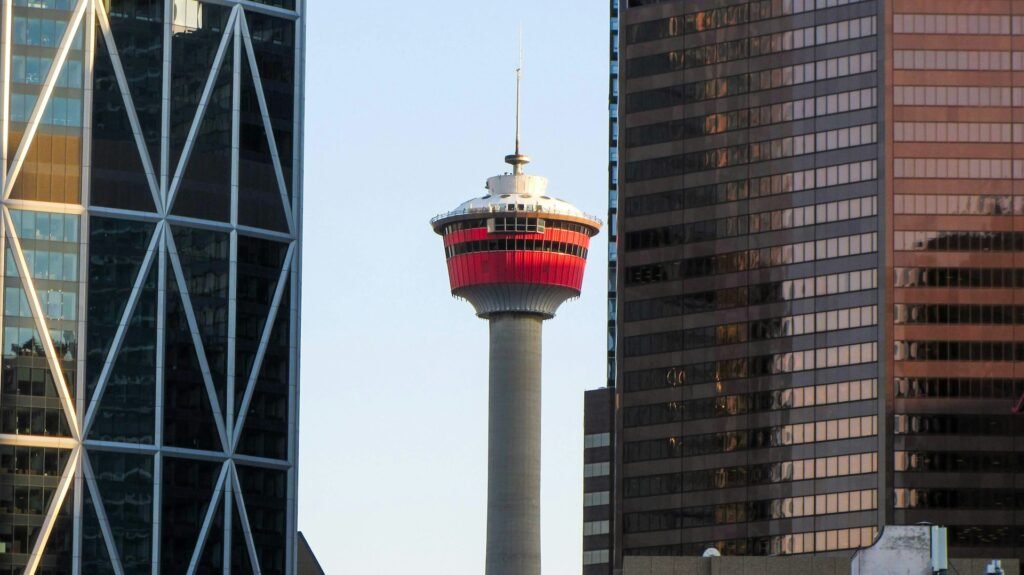
Calgary combines Western Canadian culture with cosmopolitan amenities, serving as the gateway to some of Canada’s most spectacular natural attractions. The city’s location at the foothills of the Rocky Mountains provides stunning backdrops and easy access to world-renowned outdoor adventures.
The Calgary Stampede, held every July, represents one of the world’s largest rodeos and showcases authentic Western Canadian culture. This ten-day event, known as the “Greatest Outdoor Show on Earth,” attracts visitors worldwide and celebrates the region’s ranching heritage.
Key attractions include:
- Calgary Tower: 360-degree city and mountain views
- Banff National Park: One hour drive to pristine wilderness
- Heritage Park Historical Village: Living history museum
- Prince’s Island Park: Urban oasis along the Bow River
Calgary’s proximity to the Canadian Rockies makes it an ideal base for exploring Banff and Jasper National Parks. Both parks offer world-class hiking, skiing, and wildlife viewing opportunities within easy driving distance of the city.
The Bow River flowing through Calgary provides urban recreation opportunities including kayaking, rafting, and riverside walking paths. Fish Creek Provincial Park, one of Canada’s largest urban parks, offers extensive trail systems and wildlife viewing within the city limits.
Calgary’s economic prosperity from the energy sector has created a vibrant downtown core with excellent restaurants, shopping, and cultural venues. The city’s Western hospitality combined with modern amenities creates a unique atmosphere that balances frontier heritage with contemporary sophistication.
Halifax, Nova Scotia: Maritime Charm
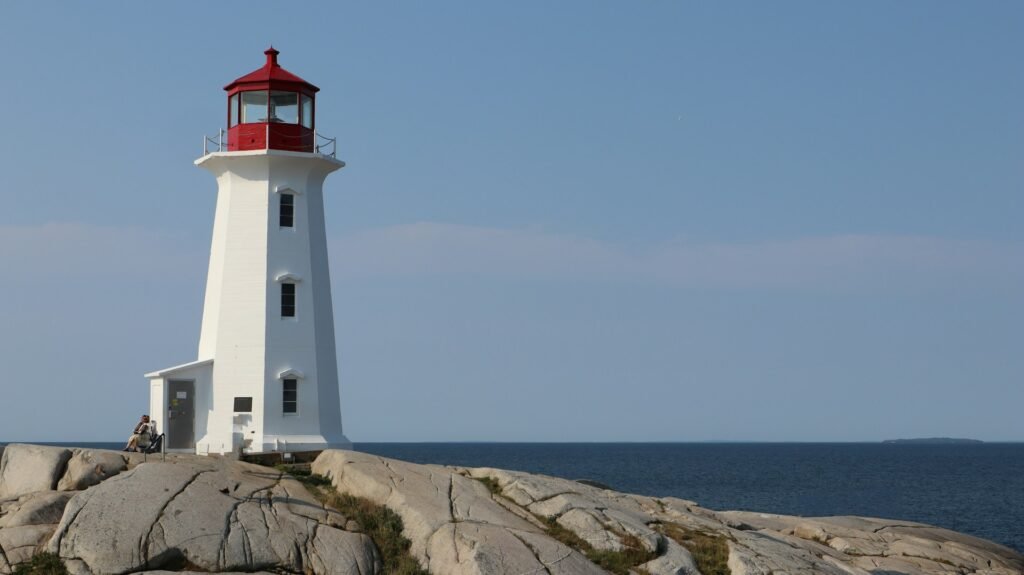
Halifax, ranking fourth in Travel + Leisure’s 2025 survey, represents the quintessential East Coast Canadian experience. This provincial capital combines rich maritime history with contemporary cultural attractions, all centered around one of the world’s largest natural harbors.
The Halifax Citadel, a star-shaped fortress overlooking the harbor, tells the story of the city’s strategic military importance since 1749. This National Historic Site provides visitors with insights into 250 years of Canadian military history while offering spectacular harbor views.
Maritime attractions include:
- Peggy’s Cove: Iconic lighthouse on wave-polished granite coastline
- Maritime Museum of the Atlantic: Titanic artifacts and maritime heritage
- Halifax Public Gardens: Formal Victorian gardens from 1867
- Waterfront Boardwalk: Scenic harbor promenade
Halifax’s musical culture sets it apart from other Canadian cities, with a thriving Celtic music scene and numerous venues showcasing local and international talent. The city’s laid-back atmosphere and exceptional seafood create an authentic Maritime experience.
The waterfront district combines historic properties with modern attractions, restaurants, and shops. Visitors can explore the harbor by boat, learning about the city’s connection to major historical events including the Titanic disaster and the Halifax Explosion of 1917.
Halifax serves as an excellent base for exploring the broader Maritime provinces, with easy access to the scenic Cabot Trail, Bay of Fundy, and numerous coastal communities that preserve traditional Atlantic Canadian culture.
Victoria, British Columbia: Garden City Elegance
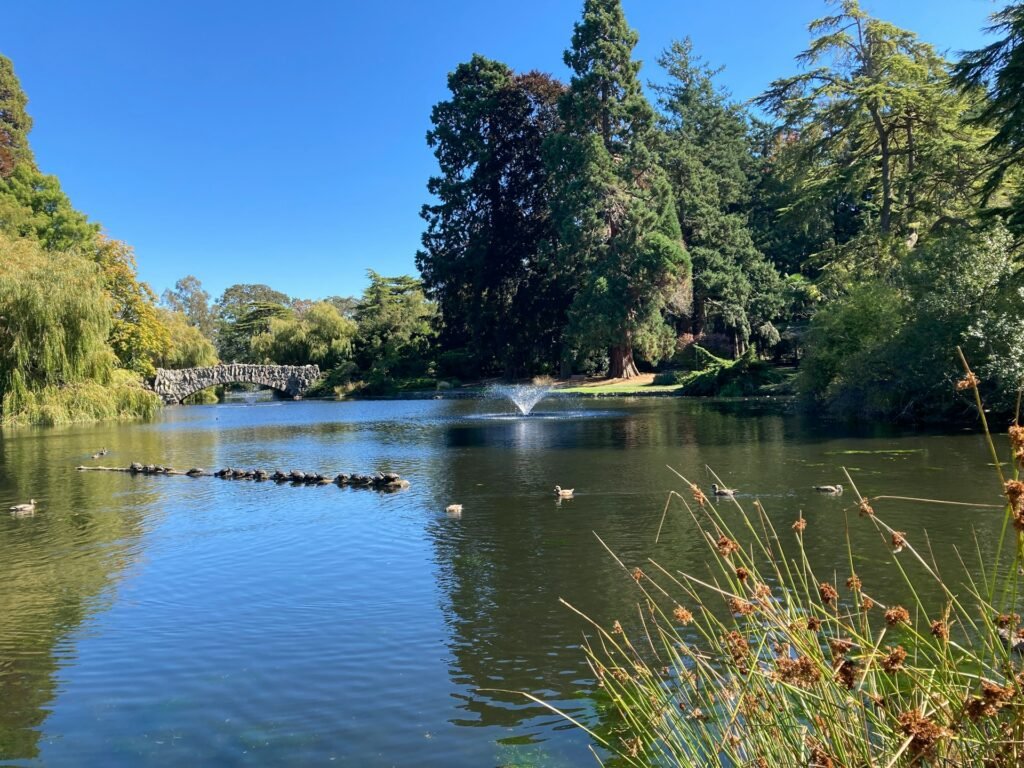
Victoria, British Columbia’s capital, offers visitors the highest concentration of restaurants per capita in Canada, making it a premier destination for culinary tourism. Located on Vancouver Island’s southern tip, this compact city combines British colonial heritage with Pacific Northwest natural beauty.
The Inner Harbour serves as Victoria’s centerpiece, where the magnificent Parliament Buildings and Empress Hotel create an impressive architectural backdrop. The harbor’s walkable waterfront connects major attractions while offering scenic views of the Olympic Mountains across the Strait of Juan de Fuca.
Garden attractions include:
- Butchart Gardens: World-renowned 55-acre floral displays
- Royal BC Museum: Natural and human history of British Columbia
- Beacon Hill Park: 200-acre urban park with ocean views
- Craigdarroch Castle: Victorian-era mansion with panoramic city views
Victoria’s mild climate allows for year-round outdoor activities and gardening, earning it the nickname “Garden City.” The Mediterranean-like weather supports diverse plant life and makes Victoria one of Canada’s most comfortable cities for walking and cycling.
The city’s sustainable practices and environmental consciousness align with its natural setting. Victoria has implemented numerous eco-friendly programs, making it a leader in urban sustainability.
British traditions remain evident throughout Victoria, from horse-drawn carriages and double-decker buses to traditional afternoon tea services at the Empress Hotel. These elements create a unique atmosphere that blends Old World charm with New World innovation.
Winnipeg, Manitoba: Cultural Heart of the Prairies
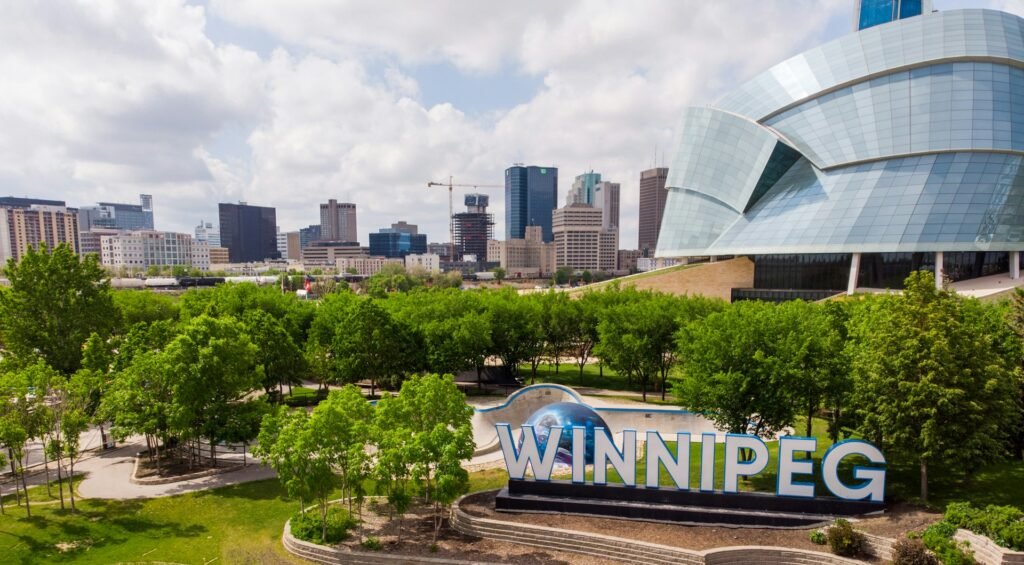
Winnipeg represents the cultural heart of Prairie Canada, offering visitors authentic experiences often overlooked by coastal-focused itineraries. This city has earned recognition as one of Canada’s most accessible cities for travelers with disabilities, winning an Accessible Cities Award from the Rick Hansen Foundation.
The Canadian Museum for Human Rights stands as Winnipeg’s crown jewel, representing the world’s first museum dedicated entirely to human rights. The building’s innovative design ensures accessibility for all visitors while showcasing powerful exhibitions about human dignity and rights.
Cultural attractions include:
- Exchange District: Historic warehouse district with beautifully preserved architecture
- Forks Market: Meeting place at the confluence of Red and Assiniboine Rivers
- Royal Winnipeg Ballet: Canada’s oldest ballet company
- Manitoba Museum: Comprehensive natural and cultural history
Winnipeg’s diverse population includes significant Eastern European communities, creating unique culinary experiences and cultural festivals not found elsewhere in Canada. This heritage influences local food scenes, architecture, and cultural celebrations throughout the year.
The Red River and surrounding prairie landscapes provide opportunities for urban outdoor activities including cycling, walking, and winter sports. Festival culture thrives in Winnipeg, with numerous annual events celebrating music, arts, and multiculturalism.
Despite its continental climate with cold winters and warm summers, Winnipeg’s indoor attractions and underground walkway systems ensure year-round accessibility to major downtown destinations.
St. John’s, Newfoundland and Labrador: Edge of North America
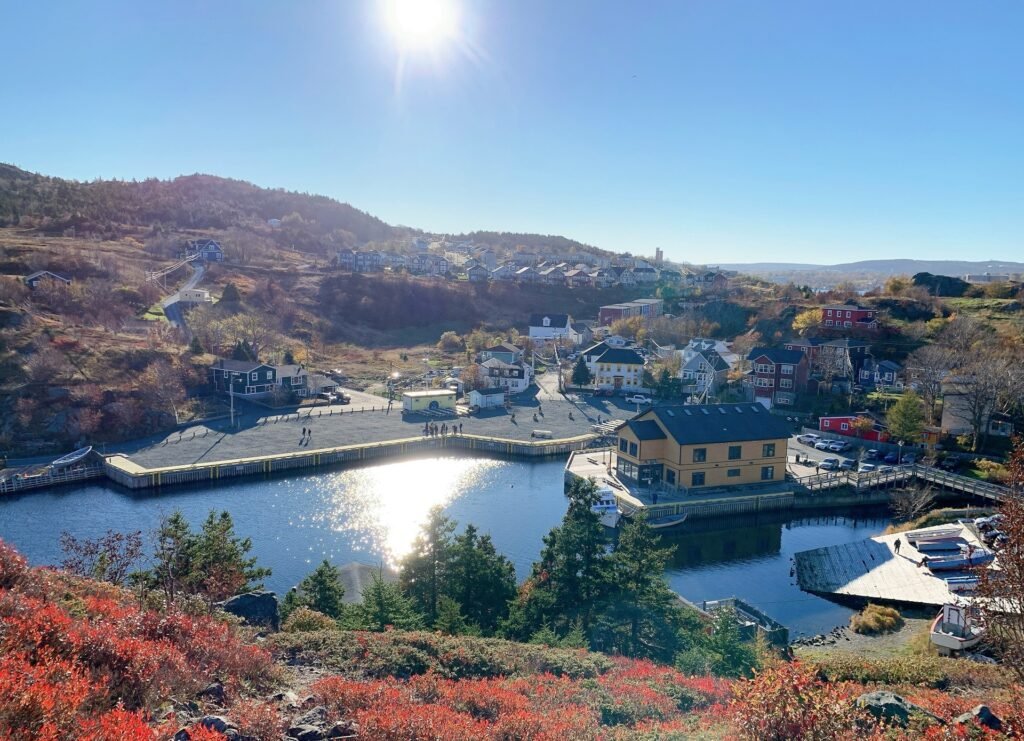
St. John’s represents one of North America’s oldest cities and offers visitors an authentic experience at the continent’s easternmost point. This colorful capital city combines maritime heritage with contemporary cultural attractions, all set against dramatic North Atlantic coastal scenery.
The city’s distinctive architecture features rows of brightly painted wooden houses climbing steep hills from the harbor. These “Jellybean Row” houses create one of Canada’s most photographed streetscapes while reflecting the community’s resilient character.
Historic attractions include:
- Signal Hill: Historic site with harbor views and Cabot Tower
- The Rooms: Provincial museum, art gallery, and archives
- George House: Historic Georgian-style mansion
- Quidi Vidi Village: Traditional fishing village within city limits
St. John’s culinary renaissance has transformed the city into an unexpected foodie destination. The collapse of the cod fishing industry led to culinary innovation, with local chefs creating sophisticated dishes from traditional ingredients and new sustainable seafood sources.
Iceberg watching provides a unique seasonal attraction, as massive icebergs drift south along “Iceberg Alley” from Greenland to Newfoundland waters. These 15,000-year-old glacial giants create spectacular viewing opportunities and even contribute to local beverage production with “Iceberg Vodka” and “Iceberg Beer.”
The warm hospitality of Newfoundlanders creates memorable experiences for visitors. Local traditions include kitchen parties (informal home gatherings with music), screech-ins (rum-based welcoming ceremonies), and storytelling that preserves the region’s rich oral heritage.
Best Times to Visit Canadian Cities
Summer (June-August) represents peak tourist season across Canada, offering warm weather and extended daylight hours perfect for outdoor activities and festivals. This period provides maximum accessibility to attractions but comes with higher prices and larger crowds.
Spring (May-June) and Fall (September-November) offer optimal visiting conditions with pleasant temperatures, fewer crowds, and reasonable prices. Fall particularly showcases spectacular foliage, while spring brings blooming flowers and renewed outdoor activity.
Winter (December-March) transforms Canadian cities into winter wonderlands, offering unique experiences like ice skating on Ottawa’s Rideau Canal, winter festivals in Quebec City, and Northern Lights viewing in northern locations.
Regional variations affect timing:
- West Coast cities like Vancouver and Victoria offer mild year-round climates
- Eastern cities experience distinct four seasons with cold winters and warm summers
- Prairie cities like Calgary and Winnipeg feature continental climates with temperature extremes
Transportation and Accessibility from the United States
Canadian cities offer excellent accessibility from major US population centers through multiple transportation options. The US-Canada border stretches 5,525 miles with over 100 land border crossings, providing numerous entry points for American visitors.
Major border crossings include:
- Peace Arch (Washington-British Columbia): Serves Vancouver-Seattle corridor
- Rainbow Bridge (New York-Ontario): Connects Niagara Falls to Toronto region
- Ambassador Bridge (Michigan-Ontario): Links Detroit to Windsor
- Champlain-Lacolle (New York-Quebec): Access to Montreal
Flight connections provide efficient access to Canadian cities from major US airports. Cities like Toronto, Vancouver, and Montreal serve as major international hubs with direct flights from across the United States.
Train travel offers scenic alternatives, particularly the Rocky Mountaineer for western destinations and VIA Rail connections between eastern cities. These options provide comfortable travel while showcasing Canadian landscapes.
US visitors require valid passports for border crossings and may need Electronic Travel Authorization (eTA) for air travel. The longest international border in the world between these neighboring countries facilitates relatively easy movement for tourism and business.
Cultural Experiences and Attractions
Canadian cities offer world-class museum collections with over 2,000 museums nationwide showcasing diverse heritage and contemporary culture. National museums in Ottawa provide comprehensive Canadian history, while regional institutions offer specialized collections reflecting local heritage.
Arts and culture scenes thrive in major Canadian cities:
- Montreal hosts the world’s largest jazz festival and numerous cultural events
- Toronto features internationally recognized film festivals and diverse theater scenes
- Vancouver combines urban galleries with natural outdoor “galleries”
- Quebec City preserves centuries of French-Canadian cultural traditions
Indigenous culture receives increasing recognition and celebration across Canadian cities. Museums, cultural centers, and festivals provide opportunities to learn about First Nations, Métis, and Inuit traditions that predate European settlement by thousands of years.
Architecture varies dramatically between cities, from Quebec City’s French colonial buildings to Calgary’s modern skyscrapers against mountain backdrops. This diversity reflects Canada’s evolution from colonial outposts to contemporary urban centers.
Culinary Tourism
Canada’s evolving food scene combines traditional dishes with contemporary innovation, creating distinctive regional cuisines worth traveling to experience. Each region offers specialties reflecting local ingredients, cultural influences, and historical traditions.
Regional specialties include:
- Maritime provinces: Fresh seafood, lobster rolls, and Acadian cuisine
- Quebec: Poutine, maple syrup products, and traditional French-Canadian dishes
- Ontario: Multicultural fusion cuisine reflecting diverse immigration
- Prairie provinces: Hearty comfort food and unique grain-based products
- British Columbia: Pacific seafood, wine country cuisine, and Asian fusion
Farmers markets throughout Canadian cities showcase local produce and artisanal products. The farm-to-table movement has gained significant momentum, with restaurants emphasizing local sourcing and seasonal menus.
Craft beverage scenes include microbreweries, distilleries, and wineries producing distinctive Canadian products. The Okanagan Valley wine region, Quebec ice cider, and Maritime craft beer represent growing segments of Canadian culinary tourism.
Food festivals celebrate regional specialties and cultural traditions throughout the year. Events like Winterlude in Ottawa, Celtic Colours in Nova Scotia, and Stampede in Calgary combine cultural celebration with culinary experiences.
Outdoor Recreation and Natural Access
Canadian cities provide exceptional access to outdoor recreation opportunities, from urban parks to nearby wilderness areas. This combination of city amenities and natural accessibility creates unique urban experiences not found in many other countries.
Urban parks and recreation:
- Stanley Park (Vancouver): 1,000-acre urban forest with beaches and trails
- Mount Royal (Montreal): Central mountain park with city views
- High Park (Toronto): Cherry blossoms and diverse ecosystems
- Fish Creek Provincial Park (Calgary): One of Canada’s largest urban parks
Nearby wilderness access allows day trips or weekend excursions to national parks, mountain ranges, and coastal areas. Cities like Calgary provide one-hour access to the Canadian Rockies, while Halifax offers easy reach to coastal highlands and maritime landscapes.
Seasonal activities transform urban recreation opportunities:
- Summer: Hiking, cycling, water sports, and outdoor festivals
- Fall: Leaf-peeping, harvest festivals, and comfortable outdoor weather
- Winter: Skiing, ice skating, snowshoeing, and winter festivals
- Spring: Wildlife viewing, garden tours, and renewed outdoor activity
Climate considerations vary significantly across Canada’s vast territory, but most major cities provide four distinct seasons with opportunities for different activities throughout the year.
Canadian cities represent some of the world’s most liveable urban destinations, combining natural beauty, cultural diversity, and welcoming communities that make visitors feel at home while exploring new experiences. From the European charm of Quebec City to the cosmopolitan energy of Toronto, each destination offers unique attractions while maintaining the distinctly Canadian character that draws millions of visitors annually.
The accessibility of Canadian cities from the United States, combined with favorable exchange rates, universal healthcare, and political stability, creates ideal conditions for American travelers seeking international experiences without extensive travel requirements. Whether planning weekend getaways or extended explorations, these ten cities provide gateways to understanding Canada’s remarkable diversity and enduring appeal as one of the world’s premier travel destinations.
